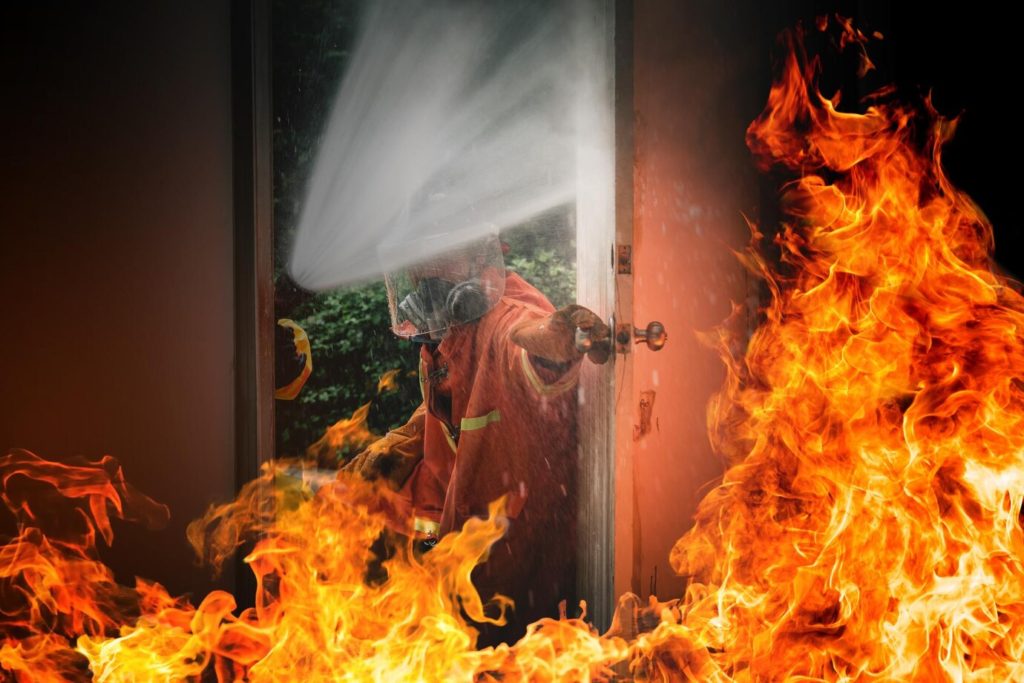Understanding Fire and Theft Insurance for Contractor’s Equipment
Contractor’s equipment plays a crucial role in the successful execution of construction projects. However, these valuable assets are constantly exposed to various risks, including fire and theft. Understanding the significance of insurance coverage for contractor’s equipment is paramount for ensuring the protection of these essential resources.
Importance of Insurance Coverage for Contractor’s Equipment
Overview of Fire and Theft Insurance
Fire and theft insurance provides a vital safeguard for contractor’s equipment by addressing the financial implications of potential damage or loss due to fire-related incidents or theft. This coverage ensures that the financial burden of repairing or replacing the equipment is alleviated, offering peace of mind to contractors and construction companies.
Specific Risks Faced by Contractor’s Equipment
Contractor’s equipment is susceptible to a range of risks, including exposure to flammable materials, electrical hazards, and the potential for theft due to their high value. Recognizing these specific risks underscores the necessity of tailored insurance coverage to mitigate potential losses effectively.
Legal Requirements and Regulations
Mandatory Insurance Requirements for Contractors
Regulatory bodies and legislation often mandate that contractors maintain specific insurance coverage for their equipment to operate within the legal framework. Understanding these mandatory requirements is crucial for compliance and ensuring the continuity of construction operations.
Regulatory Considerations for Equipment Insurance
Navigating the complex landscape of regulatory considerations for equipment insurance involves adhering to industry-specific regulations, local ordinances, and legal standards. Familiarizing oneself with these nuances is imperative in securing the appropriate insurance coverage that aligns with legal prerequisites.
By comprehensively understanding the importance of insurance coverage for contractor’s equipment and the relevant legal requirements, construction professionals can proactively safeguard their assets and mitigate potential risks.
Moving forward, the article will delve into the detailed coverage options and factors influencing premiums and coverage, offering comprehensive insights into fire and theft insurance for contractor’s equipment.
Coverage Details and Options
As a vital component of safeguarding contractor’s equipment against potential risks, understanding the specific coverage options available is essential for comprehensive asset protection.
Coverage Types
Fire Damage Coverage
Fire damage coverage is designed to mitigate the financial impact of equipment damage resulting from fire-related incidents. This type of coverage encompasses a broad range of fire-related perils, including structural fires, electrical malfunctions, and other sources of ignition, ensuring that the financial burden of repairing or replacing equipment damaged by fire is alleviated.
Theft Protection Coverage
Theft protection coverage offers a crucial layer of security for contractor’s equipment, addressing the risk of theft and unauthorized use. This coverage extends to stolen or unlawfully taken equipment, providing financial restitution for the losses incurred due to theft-related incidents.
Combined Policies
Many insurance providers offer combined fire and theft policies, consolidating both fire damage coverage and theft protection within a comprehensive insurance package. These combined policies streamline the coverage process, offering a holistic solution for addressing multiple risk factors while optimizing cost-effectiveness for contractors.
Exclusions and Limitations
Common Exclusions in Policies
It’s essential to understand the common exclusions present in insurance policies, such as specific equipment types, usage in hazardous environments, and consequential damages. Familiarizing oneself with these exclusions ensures a clear understanding of the limitations of the coverage and the need for supplementary protection, if necessary.
Coverage Limitations and Special Conditions
Insurance policies often delineate coverage limitations and special conditions that warrant attention. Understanding these specific parameters enables contractors to assess the adequacy of the coverage in addressing their unique equipment needs, ensuring that potential gaps in protection are mitigated.
By evaluating the comprehensive coverage details and options available, contractors can make informed decisions regarding the appropriate insurance solutions for their equipment.
Factors Affecting Premiums and Coverage
When considering fire and theft insurance for contractor’s equipment, it’s imperative to understand the various factors that influence insurance premiums and coverage, ensuring that the selected insurance plan aligns with the unique requirements and risk profile of the equipment.
Equipment Value and Replacement Cost
Determining the value of contractor’s equipment is a fundamental consideration in the assessment of insurance premiums and coverage limits. The valuation process involves a comprehensive evaluation of the market value, depreciation, and anticipated replacement costs, directly impacting the insurance premiums and the level of coverage required to safeguard the equipment adequately.
Impact on Premiums and Coverage Limits
The determined value and replacement cost of contractor’s equipment directly correlate with the premiums charged by insurance providers. Additionally, the valuation assessment informs the establishment of coverage limits, ensuring that the insurance plan offers sufficient protection in the event of fire damage or theft. Understanding this linkage is essential for crafting a tailored insurance solution that meets the equipment’s specific needs while optimizing cost-efficiency.
Security Measures
The implementation of robust security measures, including secure storage facilities and anti-theft mechanisms, plays a pivotal role in mitigating risks and subsequently influencing insurance premiums. Insurance providers often offer discounts for security enhancements, incentivizing the adoption of proactive security measures to minimize the likelihood of fire and theft incidents, thereby reducing associated insurance costs.
By comprehensively evaluating the factors affecting premiums and coverage, contractors can proactively strategize to optimize their insurance plans, ensuring comprehensive protection for their valuable equipment.
Choosing the Right Insurance Provider
When selecting an insurance provider for fire and theft coverage of contractor’s equipment, thorough research and evaluation are essential to ensure that the chosen provider offers comprehensive solutions that align with specific equipment needs and risk profiles.
Researching Insurance Companies
Reputation and Financial Stability
Researching the reputation and financial stability of insurance companies is crucial in assessing their capability to honor insurance claims effectively. Established and reputable insurance providers with a strong financial standing are better equipped to provide reliable coverage and support in the event of fire damage or theft incidents.
Customer Reviews and Feedback
Evaluating customer reviews and feedback offers valuable insights into the experiences of other contractors with the insurance provider. Identifying trends in customer experiences, quality of service, and claim resolution efficiency aids in making an informed decision when choosing an insurance partner for equipment coverage.
Customized Coverage Options
Tailoring Policies to Specific Equipment Needs
The flexibility of an insurance provider in tailoring policies to specific equipment needs is indispensable. Customized coverage options ensure that the insurance plan comprehensively addresses the unique risks and requirements associated with the contractor’s equipment, providing tailored protection against fire and theft incidents.
Flexibility in Coverage and Deductibles
An insurance provider offering flexibility in coverage and deductibles enables contractors to optimize their insurance plans according to their risk tolerance and budgetary constraints. Tailoring coverage and deductibles ensures that the insurance plan strikes a balance between comprehensive protection and cost-effectiveness.
By meticulously researching and evaluating insurance providers while considering customized coverage options, contractors can make well-informed decisions when selecting an insurance partner for their equipment coverage.
Making a Claim and Managing Risks
Effectively navigating the process of making a claim and implementing robust risk management strategies is fundamental to ensuring the comprehensive protection of contractor’s equipment against the potential perils of fire damage and theft.
Understanding the Claims Process
Documenting Equipment and Damages
Thorough documentation of contractor’s equipment and any damages incurred is a critical step in the claims process. Detailed records, including equipment specifications, serial numbers, and photographic evidence of damages, facilitate smooth and expedited claim assessments by the insurance provider.
Reporting Procedures and Timelines
Adhering to specific reporting procedures and timelines outlined by the insurance provider is essential in fulfilling claim requirements. Contractors must promptly notify the insurance company of any fire damage or theft incidents, ensuring compliance with reporting protocols to initiate the claims process efficiently.
Risk Management Strategies
Mitigating Fire and Theft Risks
Implementing proactive measures to mitigate fire and theft risks is paramount in safeguarding contractor’s equipment. Strategies such as fire safety protocols, security enhancements, and controlled access to equipment storage areas play a pivotal role in reducing the likelihood of incidents and minimizing associated risks.
Regular Equipment Maintenance and Inspections
Conducting regular equipment maintenance and inspections is instrumental in preemptively identifying potential hazards and vulnerabilities that could lead to fire damage or theft. Routine evaluations and upkeep not only enhance equipment longevity but also contribute to risk mitigation efforts, bolstering the overall resilience of the equipment against unforeseen perils.
In conclusion, the comprehensive coverage of “Fire and Theft Insurance for Contractor’s Equipment” encapsulates the vital importance of insurance protection, coverage details and options, factors affecting premiums, the selection of the right insurance provider, and the nuanced process of making a claim while proactively managing associated risks. By incorporating these considerations into their insurance strategy, contractors can effectively secure their equipment and mitigate potential losses.
Ensuring the comprehensive protection of contractor’s equipment against fire damage and theft not only safeguards valuable assets but also fosters a sustainable and resilient construction environment, empowering contractors to pursue their endeavors with confidence and assurance.
When it comes to protecting contractor’s equipment, having a comprehensive understanding of fire and theft insurance is crucial. Let’s delve into the key sections to gain valuable insights:
Understanding Fire and Theft Insurance for Contractor’s Equipment
Importance of Insurance Coverage for Contractor’s Equipment
- Provides a vital safeguard for valuable assets against fire and theft incidents.
- Mitigates the financial burden of repairing or replacing damaged equipment.
Legal Requirements and Regulations
- Mandatory insurance requirements ensure compliance with regulatory considerations for equipment insurance.
Coverage Details and Options
Coverage Types
- Fire damage coverage and theft protection coverage safeguard against specific risks.
- Combined policies offer comprehensive coverage options for contractors’ equipment.
Exclusions and Limitations
- Understanding common exclusions and coverage limitations is crucial for assessing the adequacy of coverage.
Factors Affecting Premiums and Coverage
Equipment Value and Replacement Cost
- Determining the value of contractor’s equipment directly impacts insurance premiums and coverage limits.
Security Measures
- The significance of secure storage and anti-theft measures influences discounts for security enhancements.
Choosing the Right Insurance Provider
Researching Insurance Companies
- Evaluating the reputation, financial stability, and customer reviews ensures reliability and quality of service.
Customized Coverage Options
- Tailoring policies to specific equipment needs with flexibility in coverage and deductibles.
Making a Claim and Managing Risks
Understanding the Claims Process
- Documenting equipment and damages and adhering to reporting procedures and timelines streamlines the claims process.
Risk Management Strategies
- Implementing proactive measures, such as regular equipment maintenance and inspections, aids in mitigating fire and theft risks.
In conclusion, a proactive approach to fire and theft insurance for contractor’s equipment is indispensable for protecting valuable assets and ensuring uninterrupted construction operations.
Ready to safeguard your contractor’s equipment from potential risks? Consult with an insurance expert to tailor a comprehensive insurance plan today.







